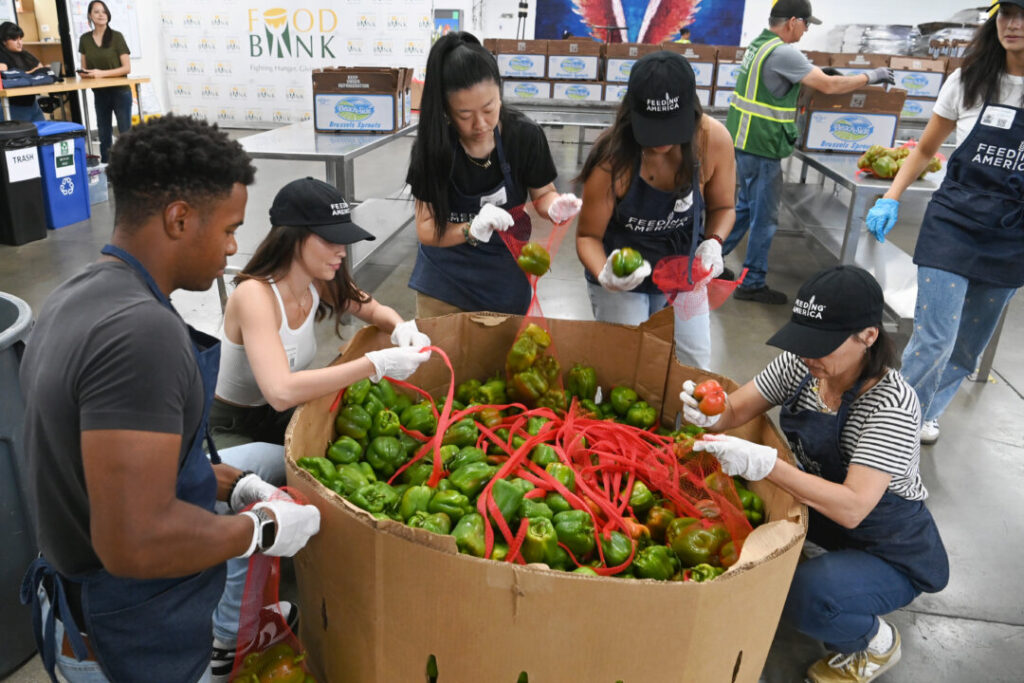Amidst federal funding, similar food aid programs face potential state budget cuts.
California Gov. Gavin Newsom appealed to the USDA on April 5th to overturn $47 million in funding for local food assistance that supplies food banks and other programs.
“The California agriculture sector relies on the support of the Department of Agriculture to ensure that fresh, healthy food can be obtained at the family table,” Newsom said in a statement.
“I beg the USDA to reverse this decision soon,” he said.
According to the USDA website, USDA’s Local Food Purchase Assistance Program (LFPA), launched in 2022, provides funding to the state “to support local, local, and underserved producers.” “The food will serve feeding programs, including food banks and organizations, reaching underserved communities.”
A similar USDA initiative, The Local Food for Schools program, launched in 2022, supports the purchase of local food for public school lunches.
At the end of 2024, the Biden administration pledged a total of $1.13 billion to raise the next funding for the local food program.
However, the Trump administration ended both programs in early March and cancelled funds, including California’s $47 million. The USDA said the program was launched to address food supply disruptions during the pandemic.
“USDA prioritizes stable, proven solutions that have lasting impact,” a USDA spokesperson told the Epoch Times in early March. “The era of symbiosis is over. USDA’s approach to nutrition programs reflects that reality is moving forward.”
According to the Newsom’s Office, California has used more than $88.5 million in LFPA funds to support local farmers and food programs since 2022, and in 2024, the California Food Bank Association received more than $22.3 million to provide local food and nearly 19 million meals to those in need.
The California Department of Education has received more than $23 million over the past few years through USDA’s local school program.
In an April 4 letter sent by the state’s Department of Social Welfare, which oversees California’s LFPA and other food aid programs, authorities said California produces almost half of the country’s fruits and vegetables.
But without the promised funding, “California’s ability to meet agricultural demand will be destroyed, with serious consequences such as weakening the state’s food supply system and limiting access to fresh produce for millions of low-income people.”
State cuts funding for similar programs
The USDA cuts are as California’s Food Aid Program also faces state fund cuts amid a $2 billion budget deficit.
The state’s decades-long Calfood program, which allows food banks to purchase from local farmers and producers, is expected to significantly reduce its $60 million funding over the past three years to $8 million in the 2025-2026 budget.
The California Food Banks Association, which has 41 food banks as a member, is asking the state to make $60 million in funding for the program permanent. The organization said the $8 million baseline funding did not meet the needs of hungry Californians.
The Epoch Times contacted Newsom’s office to comment on whether the governor would consider retaining state funds if the USDA does not reverse that decision.
USDA maintains CalFresh funding
CalFresh is the version of California’s Federal Supplementary Nutrition Assistance Program (SNAP) for low-income households.
This program is the leading federal food aid program for Californians. The USDA has not announced cuts to the program.
California received a total of $12 billion in federal funding from the CalFresh program between 2023 and 2024, providing $189 in monthly benefits to approximately 5.3 million Californians, according to a February report by the office of state legislative analysts.
Bilpan contributed to this report.



